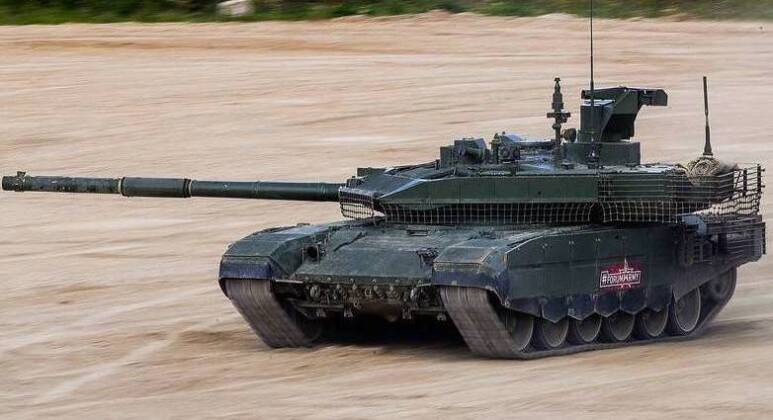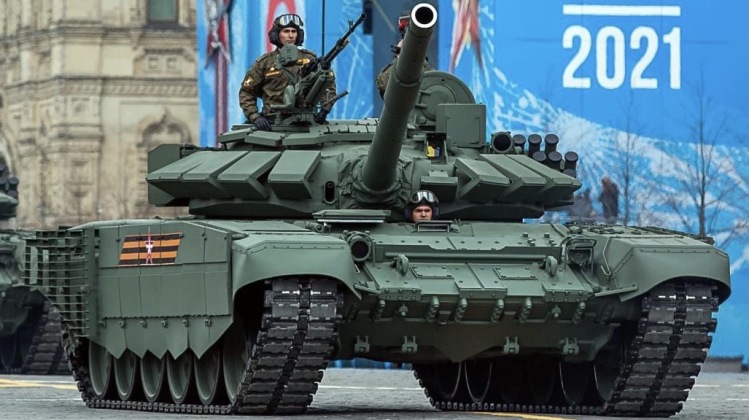News
Why Russia is Sending T-62M Tanks to Ukraine: Building a Pro-Moscow Local Force
Reports from February 26 have shown that T-62M tanks are being deployed from Russian military reserves to Ukraine, despite these having been out of frontline service in the Russian Army itself for over a decade. The backbone of Russian tank units is currently formed by modernised variants of the considerably more advanced T-72 supported by smaller numbers or T-80 and T-90 platforms, with the country’s most advanced operational tank the T-90M having been deployed to Ukraine in small numbers from late April. The deployment of the much older T-62 has been widely hailed by Western sources as a sign that Russia’s tank forces have been seriously depleted and that the country is fast losing the war in Ukraine, despite coinciding with major breakthroughs on the frontline across Eastern Ukraine. An assessment of the T-62’s capabilities and its advantages over the T-72, as well as the reasons why Russia has previously brought the tanks out of reserve in 2016, give important indications as to the most likely reasons why deployments have been made and why the tanks have been favoured over newer designs. Although Russia’s reserves of T-72 and T-80 tanks are thought to number in the thousands, there are multiple reasons why the older tank could well be better suited to Russia’s current needs in the theatre.

Russia previously brought T-62s out of storage from 2016 to equip the Syrian Arab Army newly formed 5th Corps for counterinsurgency. Since these units were largely directed by Russian officers, and were comprised mainly of newly recruited personnel with little experience, the T-62 was seen as a more suitable tank due to its lower maintenance needs and greater ease of operation. A primary drawback of the design, however, was that it needed four crew rather than three due to its lack of an autoloader, which is an issue currently faced by all Western tanks developed outside France. Another was that it’s smaller 115mm gun was considerably less powerful than the 125mm guns on all subsequent Russian designs, although in both Syria and Ukraine this remains far less of a drawback as they are expected to face infantry and light vehicles rather than heavy armour.

The Russian Army is highly unlikely to use T-62 tanks in Ukraine for a number of reasons. The tanks’ extra crew requirements would stretch already limited Russian personnel numbers. Furthermore, large supplies of T-72s, T-80s and even some T-64s are available in storage, and Russian personnel are not thought to have any training on tank classes like the T-62. It is far more likely that the tanks are to be used to equip Russian-aligned Ukrainian forces, primarily from the Russian speaking eastern regions, to allow them to quickly form new units under Russian supervision much as was done with the Syrian 5th Corps. Where the 5th Corps soon began receiving much more advanced T-72B3 tanks as its capabilities grew and units gained training and experience, the same trend could well be seen with Russian-aligned Ukrainian units using the T-62. Since these units are expected to be recruited from the population with no experience operating tanks, it will not require a re-training from the T-72 as would be the case for Russian military units. Not only are Ukraine’s tank units very far from state of the art primarily relying on 1970s variants of the T-64, but its tanks have played a very limited role in the conflict meaning T-62s will mostly be deployed against infantry and light vehicles where the difference in firepower compared to the T-72 will be of relatively minimal impact.

The T-62M has its origins in the 1980s when, as more advanced variants of the T-72 and T-80 began to enter service in parallel to new Western tanks such as the American M1 Abrams and German Leopard II, an upgrade package was developed for the T-62 prevent the widely used vehicles from becoming obsolete. Enhanced armour, more powerful engines and new fire controls were the main improvements implemented, although the tanks still lacked key features such as thermal sights seen on all Russia’s current frontline vehicles. The T-62M’s primary advantage is that it can be maintained and operated by freshly recruited personnel without the need for significant training or experience, which makes it far preferable to the T-72 to equip Russian-aligned forces in Eastern Ukraine. Strengthening allied forces in region will do much to reduce pressure on the Russian Army, including in the defence of rear areas allowing Russia’s own more modern armoured assets to be reassigned to the front. With a growing numbers of analysts predicting Ukraine’s partitioning, possibly with the west absorbed into Poland while the East join’s Russia’s sphere of influence, bolstering forces in the east could be considered a logical next step for Moscow as Russian forces continue to consolidate their positions in the Donbas.












